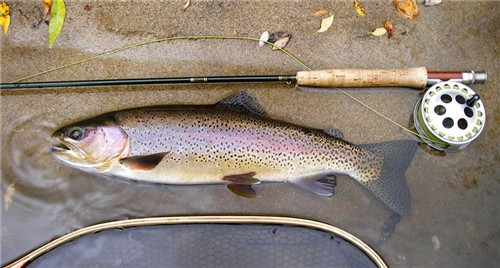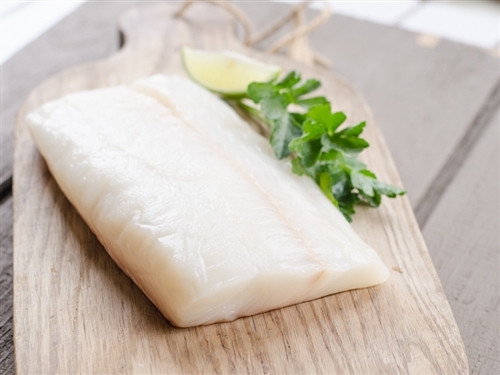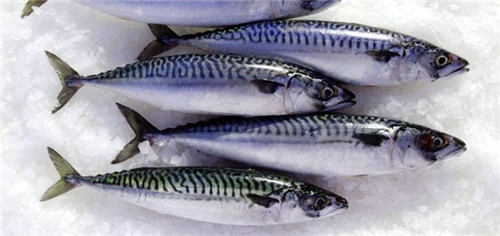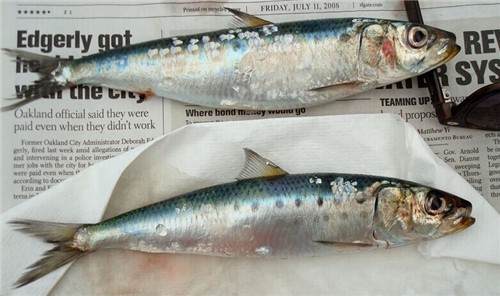For healthy, filling, tasty meals, you would be hard-pressed to find a better choice than fish. It’s rich in good fats, has high protein content, and a diet with large quantities of fish provides a multitude of health benefits. There are many different types of fish you can select, which can be cooked in a variety of ways to provide tasty, nutritious meals for you and your family. Here are the top six best fish to eat that are healthy for you and the planet.
6 Best Fish to Eat
Salmon
Nutrients:
With a distinctive appearance and a meaty succulent taste, it’s no wonder that salmon is one of the best fish to eat. It’s also a great nutritional choice, as this fish is high in vitamin D and omega-3 oils, and low in contaminants. The bones in canned salmon are also a good source of calcium.
Best Ways to Serve:
For a sure-fire way to create a tasty salmon dish, dip a fillet in egg white, roll it in poppy seeds, and then fry in a pan.
As another option, finely shred zucchini, carrot and leak, quickly sauté the vegetables then arrange them in a bed shape on parchment paper. Sprinkle the vegetables with some fennel seed, then place a salmon fillet on top. Fold the paper over the salmon, then bake for 10 minutes at 375°F. Remove from the oven and unwrap the package, and you will have a delicious complete meal.
Rainbow Trout
Nutrients:
For a milder choice, opt for rainbow trout, an interesting fish with a pale pink, delicate flesh. Rainbow trout is rich in vitamin B12, which may reduce the heart disease risk, and this fish provides over 100% of your daily recommended intake of omega-3 fatty acids. It’s also low in mercury, so there’s no restriction on the amount you can eat.
Best Ways to Serve:
To create a flavorsome dish popular in central France, wrap either a whole rainbow trout or a fillet in bacon, with any excess fat from the bacon trimmed off.
Lay the trout on top of bay leaves and lemon slices, drizzle it with olive oil, and bake in the oven at 400°F. Cook until the fish is flaky; a one-inch-thick fillet will require about 10 minutes’ cooking time.
Mix olive oil, lemon zest and drained capers with fresh basil, parsley or mint for a quick sauce which can be suitable for grilled or baked fish.
Pacific Halibut
Nutrients:
Halibut is a firm, white, mild fish, which is very versatile and appeals to all tastes. What’s more, halibut is low in fat, with only 2 grams of fat per serving, and is a great source of potassium, vitamin D and omega-3. Unfortunately, halibut may have relatively high levels of mercury, so pregnant and breastfeeding women are advised to limit their intake to once a week.
Best Ways to Serve:
This flexible fish can be prepared in many ways, and holds together well during cooking.
For an attractive dish, try steaming a halibut fillet wrapped in Boston lettuce leaves in a bamboo steamer or a double boiler with holes, or grill the fish.
Then serve it garnished with some fresh dill, with sautéed cucumber and radishes as a side-dish.
Atlantic Mackerel
Nutrients:
Mackerel packs a powerful punch, not just in terms of its strong flavor, but also in its omega-3 and vitamin B12 content. This firm white fish is low in contaminants, but the sodium levels in pickled and smoked mackerel can be rather high.
Best Ways to Serve:
To poach your mackerel French-style, cook it with water, an onion slice, a few peppercorns and a splash of white wine, and serve with a baguette. This is commonly served in France as a first course rather than the main meal.
Mackerel can also be puréed with chopped fresh chives, dill or parsley and a little butter to make a tasty spread. Use this spread on crackers, and top with lemon zest or lemon jelly for a delicious healthy snack.
Pacific Cod
Nutrients:
Cod remains a very popular choice for fish dishes, due to its mild flavor and the multitude of ways it can be cooked. Moreover, a serving of cod provides a high percentage of your daily protein, phosphorus, selenium, iodine and vitamin B12 requirements. It’s also rich in omega-3 acids and for such a great source of protein, cod is very low in fat.
Best Ways to Serve:
Cod is a versatile fish and can be baked, grilled, sautéed or fried. It is also an excellent choice for fish soups and chowders.
For a simple cod dish, fry some chopped onions then add canned chopped tomatoes, sugar, thyme and soy sauce.
Bring the mixture to the boil, then add a fillet of cod.
Cook the fish for 8-10 minutes until it flakes, then serve with new potatoes for an easy healthy meal.
Pacific Sardines
Nutrients:
Sardines have just about the highest omega-3 content of any food, and are an affordable fishy option for those on a budget, making them one of the best seafood to eat. Commonly sold canned or tinned, sardines have very high levels of protein, vitamin B12 (protecting against heart disease), and vitamin D (good for bone health). These fish are low in mercury and other contaminants, so they are safe to eat at higher quantities.
Best Ways to Serve:
Sardines have a strong taste, but can be combined with a number of other ingredients to make delicious snacks.
Try sprinkling your sardines with lemon juice, combine the fish with chopped onion, olives, or fennel, or experiment by adding some balsamic vinegar.
You can create a sauce for sardines by mixing extra virgin olive oil, lemon juice, pressed garlic, Dijon mustard, salt and pepper.
How to Buy the Best Fish
When Buying Whole Fresh Fish
Pick fish with shiny skin, bright and clear eyes, tightly adhering scales, a moist flat tail, and firm flesh that springs back into place when pressed.
The gills should be a cherry-red color, not brown.
Remember that freshwater fish should have a clean pond smell, and saltwater fish should smell briny.
When Buying Fresh Fillets and Steaks
The flesh should have a dense appearance, without any gaps between layers.
White-fleshed fish fillets should appear translucent with a pinkish hue.
When buying fish fillets wrapped in plastic, make sure the package contains little to no liquid inside.
Request your fishmonger to remove any pin bones and the bones that run crosswise to the backbone.
When Buying frozen fish
Go for well-sealed packets at the bottom of the freezer cabinet. Make sure the packets are less than 3 months old.
Select fish that are frozen rock-hard and appear shiny. Ensure there are no white freezer-burn spots, frost, or ice crystals on the fish.








View All Comments /Add Comment